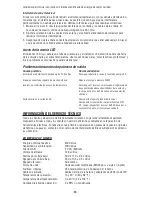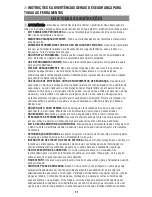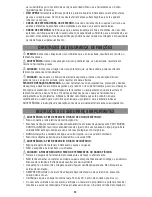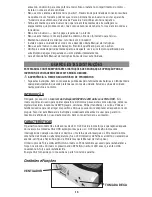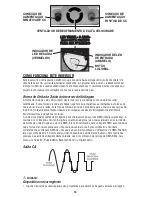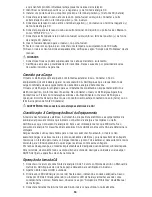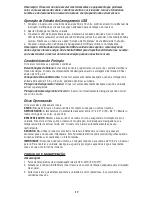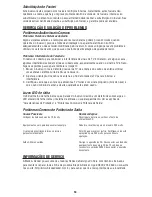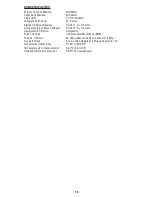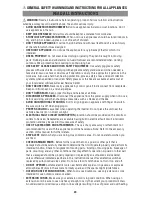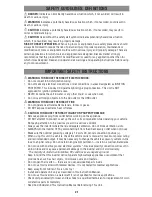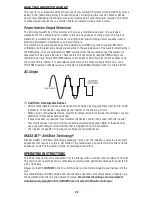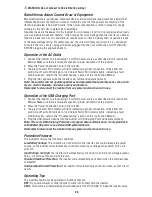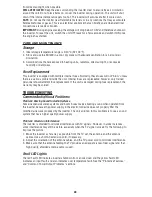
24
Connection to Power Source
The Power Inverter comes equipped with Battery Clips for connection to a power source.
Connecting to a Power Source Using the Provided Battery Clips
Use the provided Battery Clips (with cables) to connect the Power Inverter directly to the 12 volt
power source as follows:
1. Check to make sure the inverter’s Power Pushbutton has been pressed OFF (no LEDs are lit)
and that no flammable fumes are present in the installation area.
2. Connect the RED cable to the RED post marked (+) on the back of the inverter . Connect the
RED Battery Clip to the POSITIVE terminal of the battery.
3. Connect the BLACK cable to the BLACK post marked (–) on the back of the inverter. Connect
the Black Battery Clip to the NEGATIVE terminal of the battery.
4. Make sure that all connections between cables and terminals are secure.
CAUTIONS
•
Do not use with positive ground electrical systems.
•
Reverse polarity connection will result in a blown fuse and may cause permanent damage to
the inverter.
Note: The majority of modern automobiles, RVs and trucks are negative ground.
Direct Hardwiring to Power Source (optional connection method;
hardware not included)
Use #10 AWG wire if the inverter to power source connection is 6 feet or less. For longer cable
lengths use #8 AWG wire. In either case, protect the positive (+) wire from shorts by installing a
35 Amp. fuse or circuit breaker close to the DC power source (battery) terminal.
1. Check to make sure the inverter’s Power Pushbutton has been pressed OFF (no LEDs are lit)
and that no flammable fumes are present in the installation area.
2. Identify the positive (+) and negative (–) DC power source (battery) terminals.
3. Install a fuse holder or breaker close to the positive (+) terminal of the DC source (battery).
4. Connect a length of wire on one side of the fuse holder or circuit breaker. Connect the other
end of the wire to the Positive (+) terminal of the inverter.
5. Connect a length of wire between the inverter’s negative (–) terminal and the DC power source
negative (–) terminal.
6. Connect a short length of wire to the other terminal of the fuse holder or circuit breaker. Mark
it “POSITIVE” or “+”.
7. Connect the free end of the fuse or breaker wire to the positive (+) terminal of the DC power
source (battery).
8. Insert a fuse appropriate to the inverter in the fuse holder.
9. Test the inverter by turning it on and plugging in a 100 watt lamp or equipment.
10.If the inverter is not properly operating, then refer to the Troubleshooting section of this
manual.
CAUTIONS
•
Loose connectors may cause overheated wires and melted insulation.
•
Check to make sure you have not reversed the polarity. Damage due to reversed polarity is not
covered by our warranty.
Connection To Load
The Power Inverter is equipped with local standard outlets. Plug the cord from the equipment you
wish to operate into the AC receptacle(s). Make sure the combined load requirement of your
equipment does not exceed maximum continuous power.
The Power Inverter is engineered to be connected directly to standard electrical and electronic
equipment in the manner described above. Do not connect the Power Inverter to household or RV
AC distribution wiring. Do not connect the Power Inverter to any AC load circuit in which the
neutral conductor is connected to ground (earth) or to the negative of the DC (battery) source.

